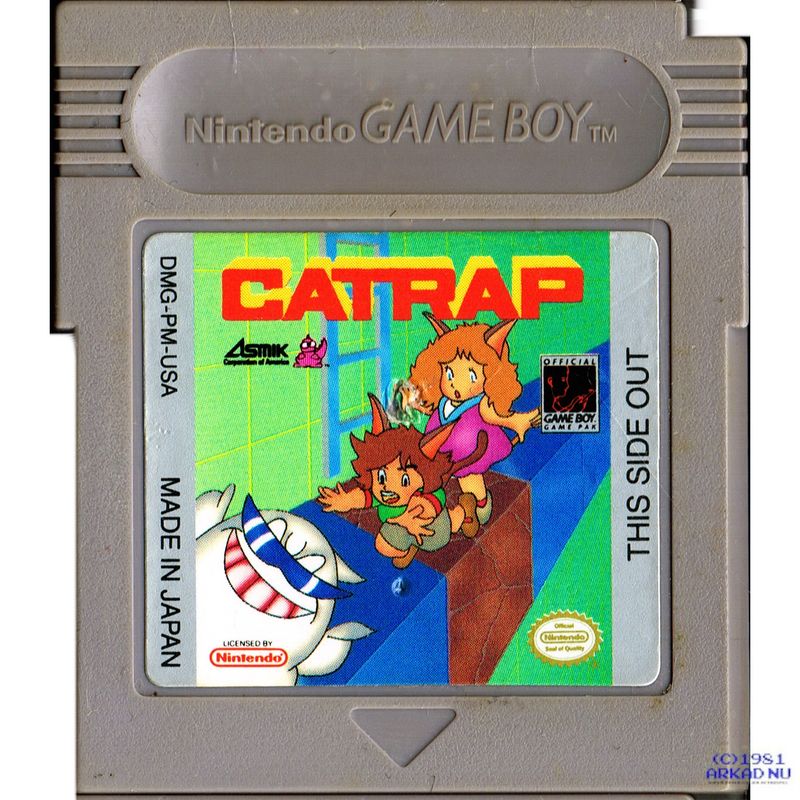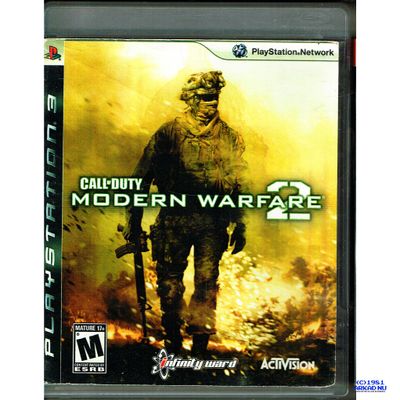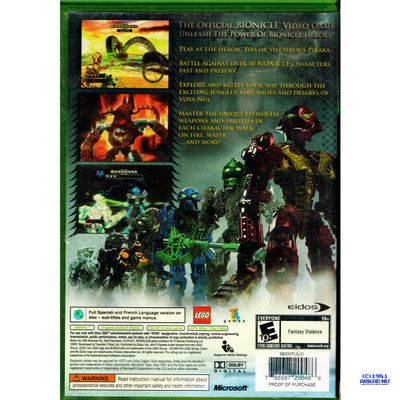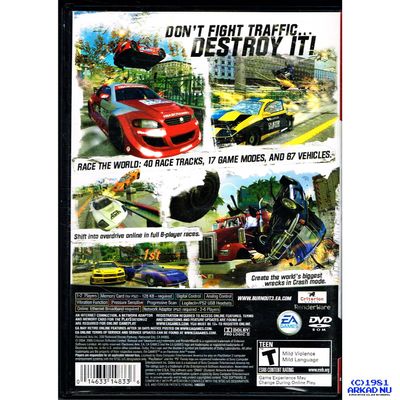CATRAP GAMEBOY USA
Liknande produkter
Beskrivning av CATRAP GAMEBOY USA
CATRAP GAMEBOY - DMG-PM-USA
FUNGERAR PÅ ALLA GAMEBOY
Catrap, known as Pitman in Japan, is a puzzle-platform game developed for the Sharp MZ-700 computer in 1985 and released by Asmik for the Nintendo Game Boy in 1990. The Game Boy version was rereleased on the Nintendo 3DS Virtual Console in October 2011. Destructoid credits the game with using a time-rewind mechanic before games like Blinx, Prince of Persia: The Sands of Time, and Braid.
The word Catrap refers to the frequent number of times the player is trapped and needs to reverse their movements and the two anthropomorphic cats the player must manoeuvre to advance through the levels.
Catrap, known as Pitman in Japan, is a puzzle-platform game developed for the Sharp MZ-700 computer in 1985 and released by Asmik for the Nintendo Game Boy in 1990. The Game Boy version was rereleased on the Nintendo 3DS Virtual Console in October 2011. Destructoid credits the game with using a time-rewind mechanic before games like Blinx, Prince of Persia: The Sands of Time, and Braid.
The word Catrap refers to the frequent number of times the player is trapped and needs to reverse their movements and the two anthropomorphic cats the player must manoeuvre to advance through the levels.
Catrap is a puzzle game. The player directs the avatar, an anthropomorphic cat, to navigate a room while clearing obstacles and kicking monsters and ghosts off the screen. Once the player has knocked all of the enemies off the screen, they advance to the next level. Advancement grows difficult for the player as increasingly intricate obstacles are presented to complicate the process of overcoming all of the monsters and ghosts. The game encourages trial and error. A player may try one combination of manoeuvres by moving the obstacle in one direction, then they may find themselves trapped. The player can hit the 'A'-button to reverse their movements and try again in a different way until they find the solution that enables them to access all of the enemies and knock them off the screen. Trial and error make up a large portion of the game. Players can also create their own mazes.
There are 100 levels for the player to clear, each one more difficult than the last with more room for error and typically take longer to complete. The first level involves no obstacles with one monster on the opposite side of the screen to knock off; the last level involves a blockade of boulders and a conundrum of ladders for the player to move and navigate to clear several floating ghosts, the most difficult level with the smallest margin for error.
ENDAST KASSETT







